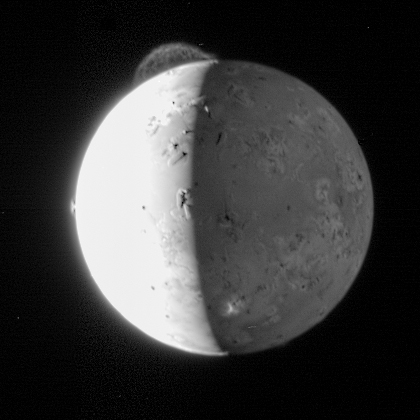Over at Galactic Interactions, Rob Knop has managed to kick off yet another “robust exchange of views” by talking a bit about his beliefs as a Christian and a scientist. By doing so, Rob has of course been taking a fair amount of flak from those who believe that those two words have no right appearing in the same sentence without a ≠ sign inserted between them. I want to say nothing about that at the moment beyond, “what John said”, but I’ve also noted another, somewhat more disturbing, theme in the comments, for example this one:
You say that you don’t have to throw out your faith to believe in science. But, at least in your case, you most certainly have thrown out your faith. You describe a mix of absolutism and relativism that I find quite confusing (how does it differ from ‘live and let live’, really?), but in any case it bears no resemblence to Christianity.
Or this one:
You did redefine both God and Christian right to the line of irrecognizability. I was a hardcore catholic, and I would never have considered you a christian. .
and, over at his blog, Jason expresses a similar sentiment:
One wonders, however, what it means to describe yourself as a Christian and then write a paragraph like the one above .
This strikes me as a rather silly, and also rather insulting, criticism. The key lies in the second comment: in a depressingly large number of cases, if you ask a Catholic whether a Protestant or a Mormon was a Christian, they would answer no. And multiply vice versa. Hell, at the moment large chunks of the Anglican Church are accusing other parts of not being True Christians; and, to a first approximation at least, Rob’s beliefs seem to be resemble Ken Miller’s, so we have a professed Catholic who would also fall foul of a ‘hardcore Catholic’. So even within the same denomination there’s obviously a fair amount of variability in what people feel defines ‘Christian’.
The point is, ‘Christianity’ is not a discrete trait like black hair or six toes or an addiction to coffee. Christians self-identify. All religious people do. Even if Rob is in a Church of one (almost certainly not the case, I suspect) he clearly has a right to call himself a Christian, and state a belief in God, without being told that he doesn’t know his own mind.* As most of us have probably been burned ourselves by non-scientists telling scientists that science is ‘unethical, godless materialism’ (or ‘a social construct of white patriarchs’), and non-biologists telling biologists that evolution is ‘random unethical, godless materialism’, we should well know the dangers of trying to define other peoples’ terms for them.
Personally, as someone who has long been interested in trying to understand what people believe and why, I’m hoping that Rob will continue to talk about the relationship between science and his faith; I’m sure I won’t be the only person who learns something if he does.
*as distinct from discussing how his Christian beliefs differ from other peoples’. There is a difference.





Nice plan for content warnings on Mastodon and the Fediverse. Now you need a Mastodon/Fediverse button on this blog.